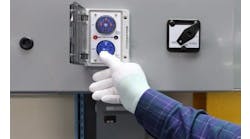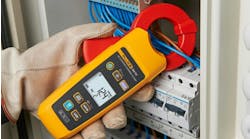The plant where you work has two main buildings, each with its own maintenance group. Occasionally, there is some cross-border exchange of expertise or even just helping hands. In the other building, there’s a big extruder that the operators say either isn’t getting hot enough or has an inconsistent temperature. The resident guru on this system is on vacation and his alternate is away on training.
Your boss has asked you to look at this and get back to her counterpart in the other building with an accurate assessment of the problem and your suggestions for solving it as soon as possible.
What are your first steps in determining what exactly is going on? What are some steps you can take to solve the problem if it’s one of the two the operators are saying it is?
Verify a temperature issue
It’s not a simple matter of taking temperatures to determine whether the problem is low temperature or inconsistent temperature. Temperature is a slow-acting and, thus, self-averaging measurement.
First, check each of the heating elements:
- Does it have power? Is the power at the correct voltage? You may have to use a simulated control signal to send power to the heater before testing whether it’s there. If there is no power, the controller may not be sending it because, per the input signal, it isn’t supposed to send it.
- Are they correctly mounted, secured, etc.? For example, a loosely mounted barrel heater will impart much of its heat to the air instead of to the barrel. Poor contact is often the cause of process heating that is inadequate or not uniform.
- Is there evidence of any damage? Look closely, as such evidence may be hard to see. Note that discoloration is often evidence of damage but it may also be evidence of poor contact because not enough heat is being transferred to the vessel (or whatever is being heated).
- Is an insulator of any sort present? If so, is it properly mounted, secured, and in good condition? If not, is that per design or is the required insulator absent?
Second, check the sensors that provide input to the controllers. For each one:
- Is the wiring in good condition and actually connected to the sensor?
- Is the sensor correctly mounted and secured? Is it in the right location?
- Does anything appear to be damaged in any way?
Third, check each controller:
- Is it receiving all of the inputs it is supposed to? Measure at the input terminals.
- Does it respond correctly? Use a simulator to determine this; run the simulated input up and down and monitor the controller output.
If all this checks out, the problem isn’t electrical.
Ask the operators to specify exactly why they believe heating is the issue. For example, does the material come out lumpy?
There may be a problem with the mixture or maybe they need to clean the process equipment. Maybe there has been an airflow change that introduced undesired cooling. Maybe they are using the wrong recipe or there’s a problem with the raw materials. They need to look at what changes they may have introduced.
Give your findings to your boss and to her counterpart. This doesn’t look like a maintenance issue, but let them decide that.




